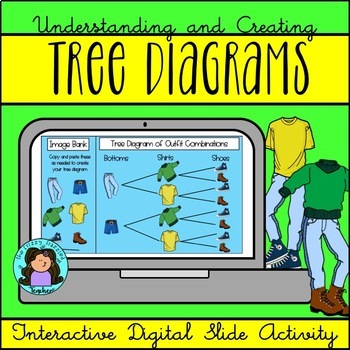DIGITAL RESOURCE: Understanding Probability through Tree Diagrams
- PDF
- Google Apps™
- Internet Activities

What educators are saying
Description
Need an engaging, visual way for students to learn about probability? This paperless digital activity introduces students to how tree diagrams work and how they can help us determine the probability of a given event. Students not only engage with tree diagrams and answer probability questions pertaining to them, but are also given the chance to create their own tree diagrams digitally by manipulating the editable slide contents according to various scenarios.
There are 20 slides in total, 10 being task slides. Also included is a link to a very helpful YouTube video about tree diagrams.
This could be used as an introductory activity, review, homework, or test prep. You could also copy and paste certain slides to assign chunks of it at a time. Up to you! You can also decide how you want students to state the probability answers (ie: fraction, ratio, percent, decimal).
Thanks for stopping by!
- The Frizzy Frazzled Teacher





